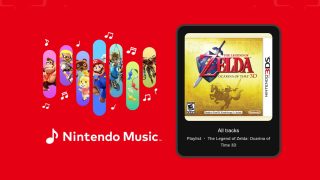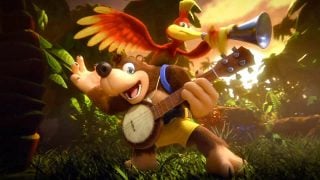Discover what makes Nintendo so special in today’s gaming world through Nintendo Inquirer’s N Factor series!
“What do you love about Nintendo? The more I ask myself that question, the more complex my answer gets. I decided to use the term “N factor” to describe my feelings, because while it’s near impossible to define, Nintendo’s best games all have some undeniable and exclusive allure about them. They’re the result of finely tuned ideas and ideals that collectively personify the company behind them.”
The N Factor series:
N Factor, Part 1: Charm
N Factor, Part 2: Respect
N Factor, Part 3: Agelessness
N Factor, Part 4: Immersion
N Factor, Part 5: Creativity
N Factor, Part 6: Unity
N Factor, Part 7: Polish
-
- N Factor, Part 8: Timelessness
N Factor, Part 9: Fun
N Factor, Part 10: Vision
More than any other hardware generation, the 16-bit consoles of the early ‘90s defy the often cruel effects of time. The hardware that predates this golden age forced developers to leave a little bit too much up to the player’s imagination, confining most of the artistic vision to the illustrations on cover art and in instruction manuals. The generation that followed the SNES and Genesis didn’t fare much better. Though Nintendo 64 and PlayStation are home to some of the most beloved games of all time, the titles that mark the industry’s first steps into the third dimension have arguably aged worse than any others in gaming history.
The 16-bit sweet spot provided the perfect amount of color and fidelity to let game makers fully convey their artistic vision on the screen, rather than on packaging. A couple of my favorite examples are Chrono Trigger and Super Mario World, two titles that look, feel and sound every bit as good by today’s standards as they did twenty years ago.
Yes, the timeless appeal of Super Nintendo’s library of games goes far beyond its clean visuals. This era also allowed an ambitious, but not overly complicated, level of complexity in mechanics, AI and animation. These elements, combined with the age-defying pixel art of the time, brewed the perfect protective serum against the ravages of the subsequent decades. There’s a reason that so many modern games are chasing this iconic look and feel over 20 years later, when hardware has empowered them to move many orders of magnitude beyond it. One particular Super Nintendo title, more than any other game (in my book), illustrates a mastery of all of these fortunate building blocks: The Legend of Zelda: A Link to the Past.
Few character sprites are as recognizable as the green-clad hero of A Link to the Past. Link’s bouncy hat, iconic sword-aloft pose, and, umm… pink hair… are about as unforgettable as pixel art gets. More amazingly, the design of every enemy, item, and piece of environmental decor in the game is etched into my brain just as strongly. A quick glance at the hollowed stump near the lumberjack brothers’ house, without fail, brings back a whole host of memories about those characters, that part of the map, and even where and how old I was when I saw it for the first time.
The way things move in A Link to the Past is just as meticulously defined. Winding up and letting loose Link’s Pegasus Boot charge or studying the erratic movement patterns of Moldorm at the top of Hera’s Tower are two miniscule, but hugely important, examples of the game’s unmistakable fluidity. Hundreds of tiny visual and animated contributions like these combine to create an environment– a world– so vivid, that any one piece of the puzzle can bring the entire scope of it rushing back into your mind in an instant. In my experience as a lifelong gamer, that kind of visual mastery is exclusively a product of this period, and an assortment of games that truly understood the benefits of their time.
This unforgettable portrayal of Hyrule isn’t just one of the best looking video games of all time; it’s virtually flawless in terms of mechanics, as well. Every aspect of the controls, and the actions they’re used to execute feels perfectly tuned and balanced. Each swipe and spin of Link’s blade, every hop and dash he performs, and the careful design and implementation of his many collected tools; all of these actions come together to define a high mark for how video games should feel to play. 25 years later, A Link to the Past has yet to be bested when it comes to sharp, precise and consistent game design.
Like every visual cue, enemy encounter, and piece of Link’s arsenal, the music and sound effects in A Link to the Past are an indispensable part of its presentation. I remember with absurd clarity the early summer day that my next-door neighbor got his copy of the game. It was 1992 and I was nine years old. We turned it on for the first time and were greeted by this:
Nintendo is still making fantastic games these days, as are many other talented studios across all modern consoles. It’s a great time to be a gamer. I have to wonder, though, if the generation of hardware that we’re in the middle of now, or any from the past two decades, will truly stand the test of time. 20 years from now, will games be modeled to channel the unique traits offered by the Wii U, PlayStation 4 or Xbox One? Honestly, I doubt it. But I can say with near certainty that over the next 20 years, and beyond, developers will continue to make games that seek to recapture the iconic look, feel and sound of the 16-bit era. And for the pinnacle of what the generation had to offer, they need look no further than The Legend of Zelda: A Link to the Past.
Leave a Comment



